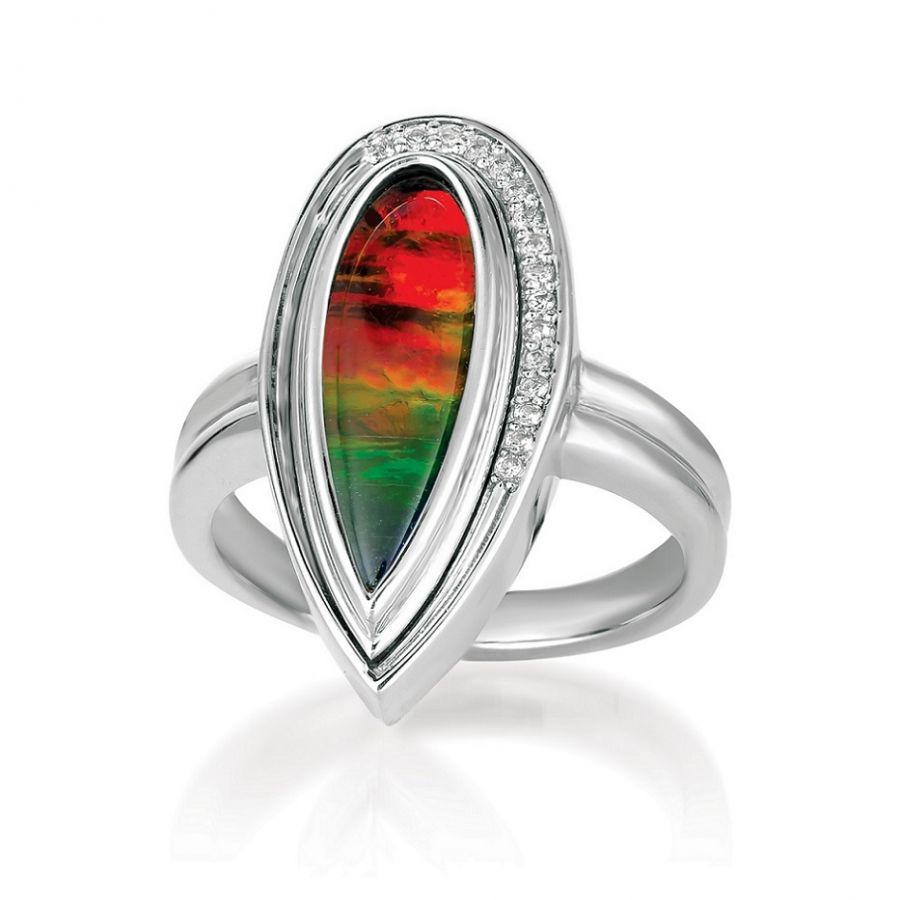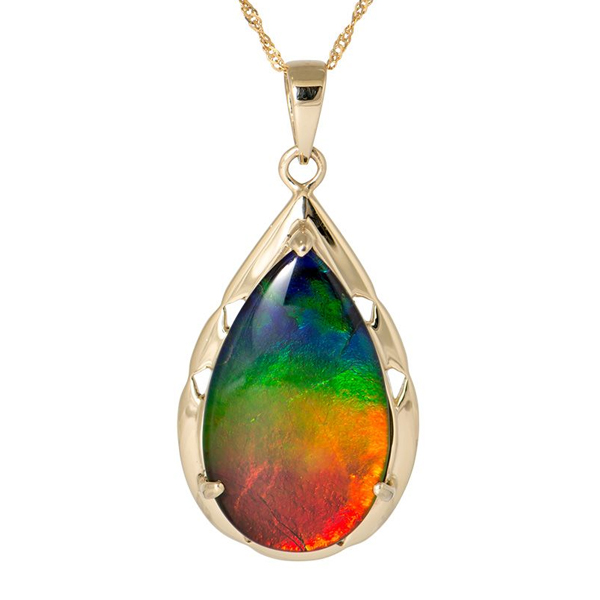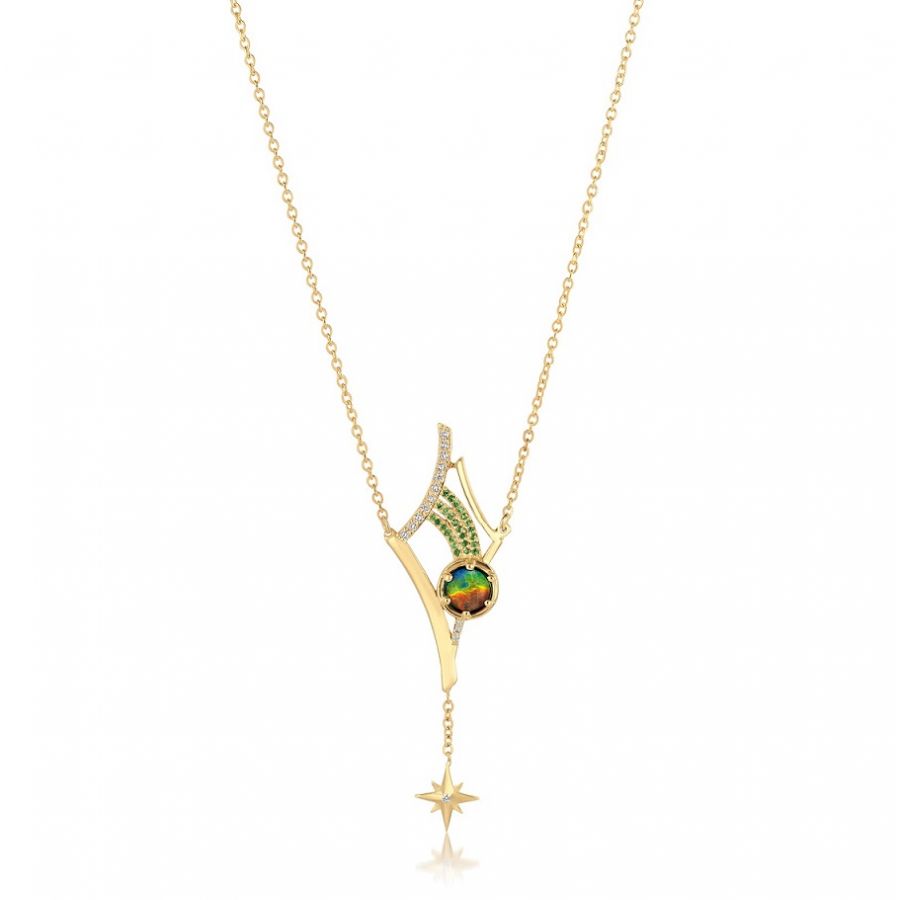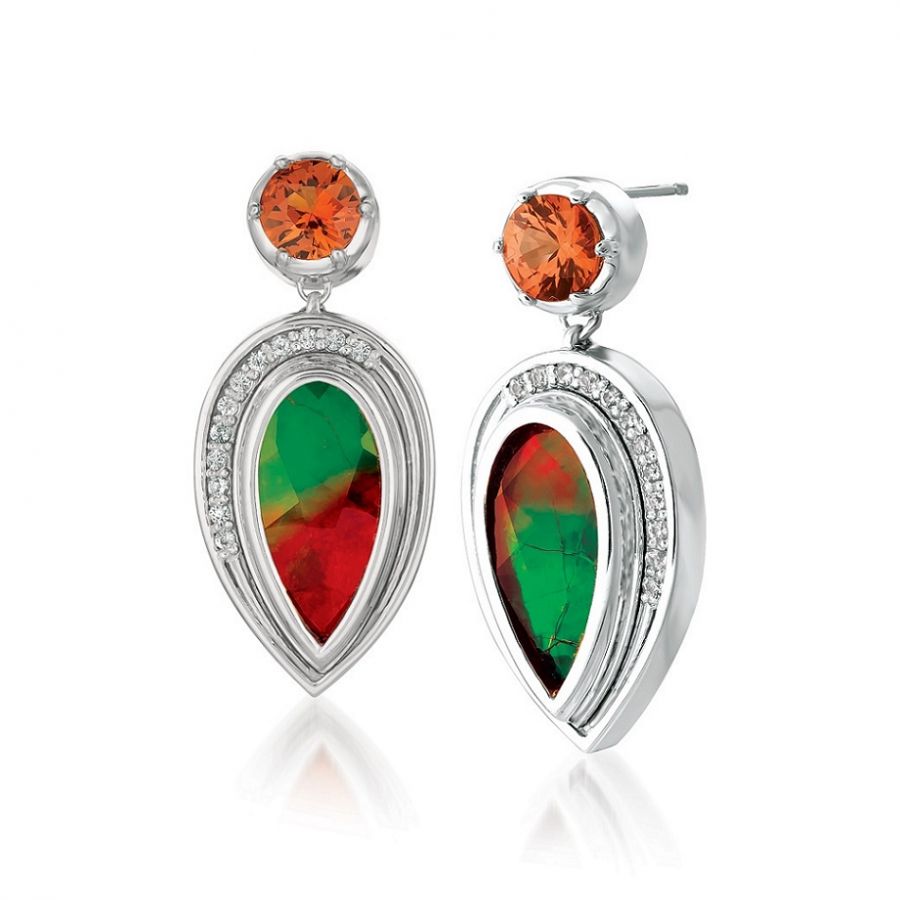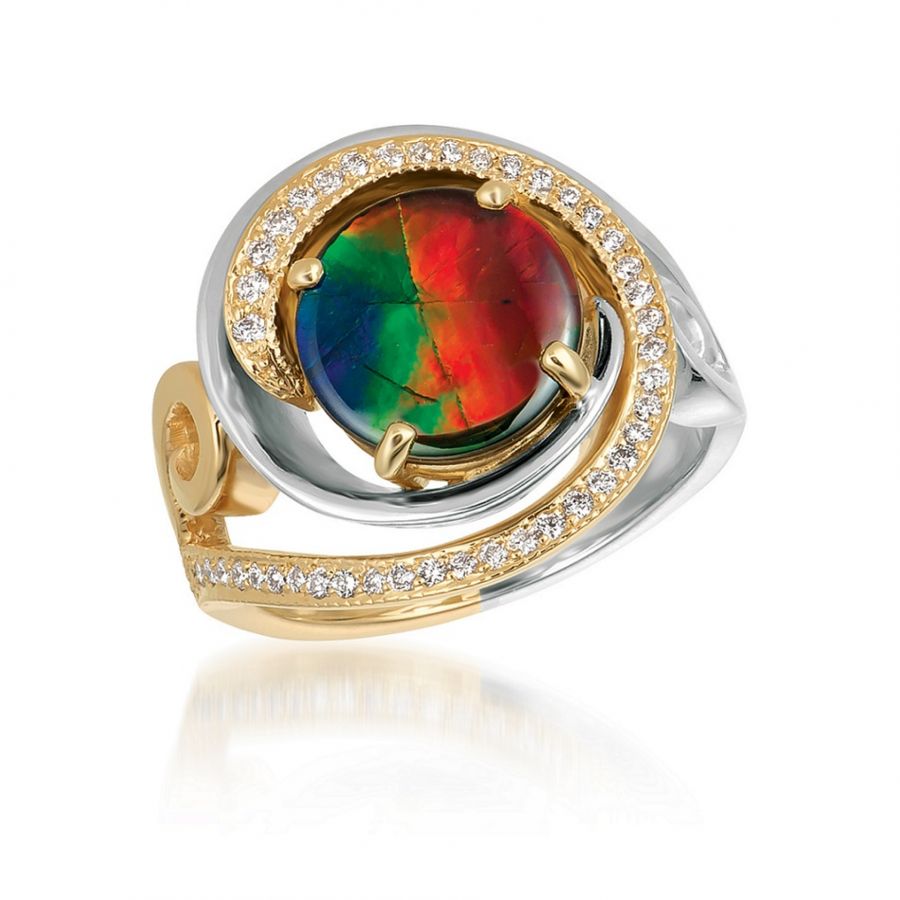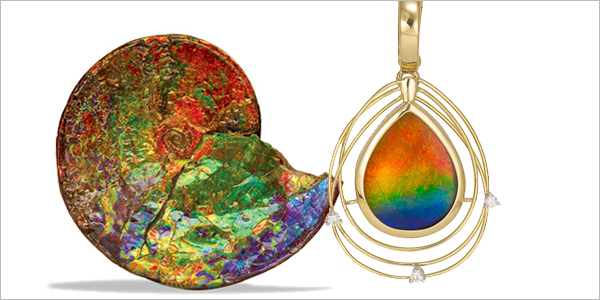
Ammolite is celebrated globally for its naturally captivating rainbow colors and layers of vibrant iridescence. Ammolite originates from prehistoric marine fossils that date back 71-million years and received official gem status as recently as 1981 by the World Jewellery Confederation. Feng Shui experts believe its colorful display awakens positive energy and stimulates creativity, energy, wisdom, intellect and wealth. Wearers and collectors call ammolites "gems of enlightenment."
Amethyst belongs to the quartz species and is related to rock crystal, citrine, prasiolite (a rare, greenish variety of quartz) and agate (a variety of chalcedony).
Amethyst is the February birthstone
Color
Ammolite’s luminous qualities rival the black opal for color and fire. Ammolite reflects a rainbow's worth of colors (red, orange, yellow, blue, green, purple and more), and the luminous color spectrum in each gem is unique.Cut
To date, the only source of ammolite is in Alberta, Canada.Origin
Russia was a classic source for amethyst. Current sources include Brazil, Bolivia, South Africa, South Korea, the United States, Uruguay and Zambia.Durability
Naturally, ammolite is a soft gemstone with a 3.5-4 on the Mohs Hardness Scale. A protective spinel crystal is often applied to protect the ammolite gem, increasing the hardness to 8.5.Treatments
Ammolites are not generally treated. It's all-natural color is its most distinctive feature.Care & Cleaning
- As with most gemstone jewelry, you want to minimize scratching and wear, so store each piece of fine jewelry separately in a soft cloth or padded container.
- Ammolite jewelry is best cleaned with warm, sudsy water and a tightly woven microfiber or other soft cloth.
- Most importantly, take all your fine jewelry to a professional jeweler at least twice a year for a thorough cleaning and inspection.
Find Ammolite pieces at a trustworthy, JA Member Jewelry store in our Find a Jeweler directory.





